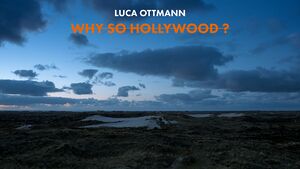CTMethods
Methods Session One
What, How why
LEGACY
The project LEGACY shows everyday garbage, old furniture, garbage bags filled to the brim and whatever you can think about thrown or dumped onto the sidewalk, streets, parks and in general just all over city, no matter how big or small. The remains of a bbq dumped into nature and hang from a tree, old furniture just thrown onto the sidewalk, old newspapers, still wrapped and bound together, just sitting on a street corner left to rot - just to name some examples of the portrayed scenes shown in the project.
Through traveling to different cities around Germany and walking the streets of those cities, photographing scenes more than places, scenes you could most likely find in any city, I tried to portray the ubiquity of trash in public places. The final selection of images, a mixture of digital and analog photography using a multitude of cameras and film stocks, is shown in form of a photo book and was originally shown with an installation of the book in an exhibition. The exhibition showed the book, in an unbound form, suspended from thin wires and arranged in a grid surrounding a center piece, containing a larger framed photograph.
The project tries to show how little we as a society care about what and how we leave things behind for upcoming generations especially when it comes to public places. Most people are focused on themselves and their way through the day or through life, the bigger the city the more its about oneself most of the time. When we move around our home, our own property, we are very delicate with thrash and how we leave our space, but when it comes to public spaces no one feels responsible and nobody cares about how a place is left behind or where trash is dumped. The ubiquity of littering and trash in public places shall be looked at, actively perceived and accepted as what it is, omnipresent. It is about showing the things we want to forgot and trying to portray them in a romanticized way that makes us think about how we perceive garbage and trash in public places, when most of the time we wouldn’t even think to look at it for more than a second.
EDITED VERSION:
The project LEGACY shows trash, old furniture, garbage bags filled to the brim and whatever you can think about thrown or dumped onto the sidewalk, streets, parks and in general just all over city, no matter how big or small. The remains of a bbq dumped into nature and hang from a tree, old furniture just thrown onto the sidewalk, old newspapers, still wrapped and bound together, just sitting on a street corner left to rot - just to name some examples of the portrayed scenes shown in the project.
Through traveling to different cities around Germany and walking the streets of those cities, photographing scenes more than places, scenes you could most likely find in any city, I tried to portray the ubiquity of trash in public places. The final selection of images, a mixture of digital and analog photography using a multitude of cameras and film stocks, is shown in form of a photo book and was originally shown with an installation of the book in an exhibition. The exhibition showed the book, in an unbound form, suspended from thin wires and arranged in a grid surrounding a center piece, containing a larger framed photograph.
The project tries to show how little we as a society care about what and how we leave things behind for upcoming generations especially when it comes to public places. Most people are focused on themselves and their way through the day or through life, the bigger the city the more its about oneself most of the time. When we move around our home, our own property, we are very delicate with thrash and how we leave our space, but when it comes to public spaces no one feels responsible and nobody cares about how a place is left behind or where trash is dumped. The ubiquity of littering and trash in public places shall be looked at, actively perceived and accepted as what it is, omnipresent. It is about showing the things we want to forgot and trying to portray them in a romanticized way that makes us think about how we perceive garbage and trash in public places, when most of the time we wouldn’t even think to look at it for more than a second.
Methods Session two
interview!!!!
Back to base: https://pzwiki.wdka.nl/mediadesign/CrashTestStudent

